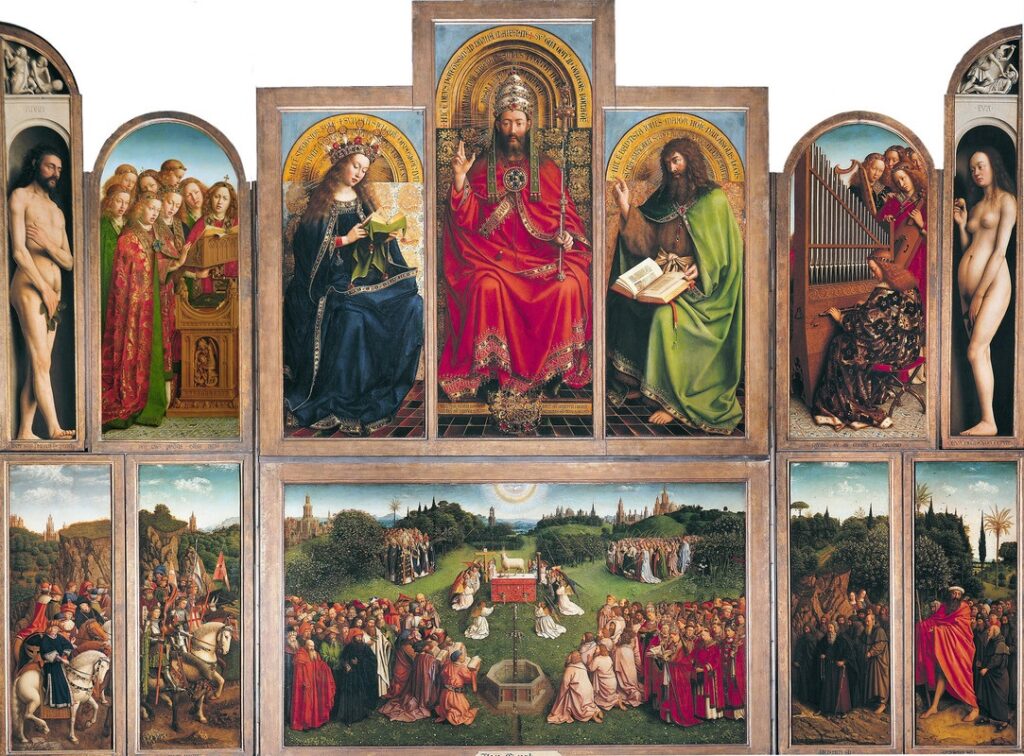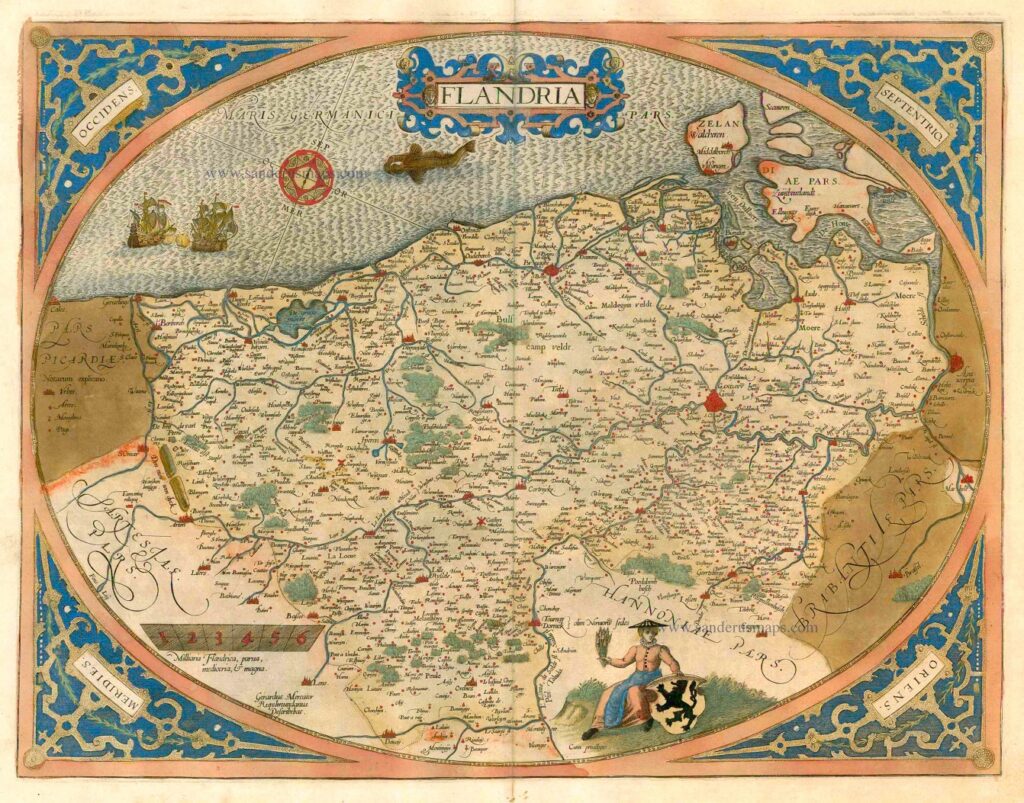Students in Flemish schools might sit down at the start of the new term with a lesson on gay marriage, the contraceptive pill, or migration. Not topics that would make teachers popular in some parts of the world.
The topics are part of the new Flemish Canon, a list of 60 themes unveiled earlier this year. The aim, according to Flemish Education Minister Ben Weyts, is to highlight the people and events “that have shaped the Flanders where we live now.”
The canon will not be compulsory in schools, Weyts insists. Nonetheless, he says primary and secondary teachers will want to use the list. “Not just in history lessons, but also in Dutch language classes, geography, art and design, you name it”.
The idea goes back to 2004 when Denmark’s Culture Minister Brian Mikkelsen launched the Kulturkanonen project. Published two years later, it lists 108 Danish cultural icons from literature, cinema, theatre, architecture, design and art. They include Viking longships, Lego, The Little Mermaid and even Donald Duck (invented by a Dane).
The aim was to create a sense of Danish identity and national pride at a time when globalisation and migration were seen by many as destroying any sense of a common culture. However, critics say that the canon has had a limited effect on young Danes, who turn out to be more interested in English and American culture.
The Dutch government brought out a Canon van Nederland at about the same time as Denmark. It offers a summary of Dutch history in 50 themes (or “windows”) illustrating broad historical trends. The astronomer Eise Eisinga stands for the Dutch Enlightenment. Anne Frank illustrates the Holocaust. And Vincent Van Gogh is on the list as an example of a modern Dutch artist.
The committee that drew up the Dutch list made some brave choices. One window looks at the country’s role in the slave trade. Another turns the spotlight on the Srebrenica massacre as an illustration of “the dilemmas of peacekeeping.” Nonetheless, there were still critical voices: the list was altered in 2020 in response to the objection that it was too focused on white men.
Flemish heritage
Some 15 years after the Danish and Dutch initiatives, the Flemish government decided to create its own Canon van Vlaanderen. It also commissioned the TV series Het Verhaal van Vlaanderen inspired by Danish and Dutch precedents. Something was obviously going on in these small northern European countries.
The Flemish nationalist N-VA-led government agreed a budget of €700,000 and appointed a committee of nine experts, four women and five men, led by the historian Emmanuel Gerard of Leuven University.
From the start, Gerard had a hard time persuading fellow historians it was not a propaganda exercise. “This is not an attempt to construct a Flemish identity,” he insisted.
But many thought it was exactly that. In a 2022 pamphlet published by the Flemish Academy of Science and Arts, three eminent Flemish historians argued the canon would boost the Flemish nationalist cause by promoting an “anti-Belgian agenda” and persuading people to identify with Flanders rather than Belgium. The historian Bruno De Wever, brother of the N-VA leader Bart De Wever, dubbed it a “political project”.
Artists and Golden Spurs, but no beer
When the canon was finally launched in May 2023, it was a major media event in Flanders, covered by every newspaper and TV channel.

Flemish Minister President Jan Jambon, Historian Emmanuel Gerard and Flemish Minister of Education Ben Weyts at the Canon's presentation in Genk, May 2023
Many of the 60 topics are obvious choices. To omit the Battle of the Golden Spurs in 1302, which gave Flanders its national day, would have caused a riot. Likewise, Charles V, born in Ghent, has his place in the canon, along with the Flemish artists Rubens, Bruegel, Van Eyck and Ensor. There is the mediaeval poem Reynaerde the Fox (Reynaert in English), and the Renaissance humanist Erasmus. And the creation of the language border in 1962 could hardly be left out.

The Battle of the Golden Spurs, picture from the Grand Chroniques de France
But there was plenty for people to complain about. Where was Father Damian, the poet Guido Gazelle, the writer Willem Elsschot or the art curator Jan Hoet? Why was Limburg overlooked? Why include Jacques Brel and omit the Flemish singer Wil Tura? And how could anyone publish a Flemish canon without including beer? Or fries?
Ben Weyts faced off his critics by insisting the canon was a starting point for discussion. “A canon is always a collection of choices,” he argued. “You could fill libraries with all the themes that have been left out.” But the final result “is impressive and we should be proud of it,” he said.

Jan Van Eyck's Ghent Altarpiece
The response to the canon was largely positive. More so than expected. A book dedicated to the canon quickly sold out. The publisher had to rush a second run to meet demand.
The final list included some unexpected topics. It includes Werchter as an example of festival culture. It also added the Ros Beiaard procession held in Dendermonde every ten years. And Jacques Brel earned a place in this list of Flemish icons as an example of the role of French culture in Flanders.
The list also includes the traditional cookery book Ons Kookboek, which has been used in Flemish kitchens since 1927. Early editions had advice on how to slaughter a pig at home. By 1964, the Flemish housewife (men were not expected to do anything in the kitchen) was learning how to cook the Italian novelty called spaghetti.
Even when a topic is obvious, it is sometimes given a fresh twist. The First World War is normally seen as a series of bloody battles. But the canon focuses on the “Grieving Couple” sculpture by the German artist Käthe Kollwitz in Vladslo Cemetery. The statue created in memory of Peter Kollwitz, who died fighting in Flanders, provides an intimate personal story as a way of understanding the war.
Diversity, industry, migration
But the most impressive aspect of the canon is its emphasis on diversity, migration and foreigners. The list includes people like the Arab cartographer Muhammad Al-Idrisi (who included Flanders on his 12th-century world map) and the Congolese thinker Paul Panda Farnana (one of the first to criticise colonialism).
You can judge the full list for yourself by clicking on the impressive website dedicated to the canon. The topics are set out in a chronological timeline, along with a brief description. You can dig deeper into each topic by clicking on longer texts, photos, archive documents and videos.
Take the topic of industrialisation. The entry point is Lieven Bauwens, the Ghent local hero who smuggled an English Mule Jenny spinning machine into Belgium. He turned Ghent into “a second Manchester,” the text claims. If you want to go deeper, you will find texts about industrialisation in Wallonia, the role of women in the textile industry and the staircase built by Bauwens for Napoleon’s visit to Ghent in 1803.
Or how about the final entry? The theme of migration is illustrated by the Giants’ Procession in Borgerhout, a traditional Flemish parade from 1712 that has been given a multicultural twist by including new giants such as Little Amal, who represents a Syrian refugee.
You can also learn about the migrant miners who settled in Flanders, Hungarian child refugees, the huge Jain temple in Wilrijk and Antwerp’s Chinatown district. There are also links to news articles about the contemporary migrant crisis and a link to the Migration Museum in Brussels.
Encouraged by the positive reactions, the committee has suggested that the Flemish canon could serve as a model for other countries. There might be a Walloon version, a Belgian version, a canon of Europe or even a world canon. But Weyts preferred to talk about more modest proposals, such as local Flemish initiatives. An Erps-Kwerps canon, maybe?
The one criticism one might raise is that the information is only available in Dutch. Not much use if you have just arrived in the country without a word of the local language. But that could change. A month after the launch, Weyts announced a plan to set up an independent Flemish Canon Foundation to develop the concept further.
He said there might be a simplified version for children, additional material for newcomers as part of the compulsory integration course, and translations into other languages like English, French and German. All of which shows the Flemish Canon has gone off with a bang.


